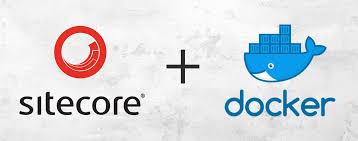Finally Sitecore 10 is out and all the Sitecore developers are going crazy at this moment, especially the MVPs :P
LinkedIn has flooded with Sitecore 10 blogs about the first installation experience, the introduction of new features etc. So I got curious (like wasnt 9.3 launched a while back..) and, when got a chance, deep dived into the Sitecore 10 Release Notes to understand what the newer version brings to the table for developers. Here is the list of Sitecore 10 features which I believe still makes it worthy in content management ecosystem -
- Infrastructure-as-code - Sitecore 10 officially supports Docker, Kubernetes and new Sitecore-provided image repositories. This is really going to speed up on-boarding process for new developers into the project. So, Infrastructure-as-code enables the local setup to be source controlled (like code). New members have to setup the local repository and run few commands to setup their local instance. What's even greater is that the local setup across the team will be consistent. (Easy debugging of local environment issues.. right :P)
- A new ASP.NET Core headless development option allows teams to build applications faster on the latest .NET technology. Dot net core (or dot net framework) is Microsoft's future development framework which is free, cross-platform, open source technology (I guess that's enough reason to help us understand why Sitecore went that way).
- Sitecore for Visual Studio bring headless serialization by combining the best of TDS and Unicorn , making it easy for teams to script content changes and move them between different environments as part of deployment processes. This is the result of Sitecore acquiring Hedgehog (who developed the awesome TDS tool for item serialization and synchronization). Guess what, Sitecore is providing TDS capabilities with a new name now - Sitecore for Visual Studio (or Sitecore Module Explorer).
- Sitecore CLI allows console communication with a Sitecore instance. This will ensure higher level of automation. Developers have already experienced similar capabilities in JSS CLI.
- Getting Started dotnet new template via NuGet - Sitecore finally has provided a way to create your new Sitecore solution inline with Helix conventions using a single command (just like JSS commands). Till now, developers have manually created the Helix standard folder structure in the solution. Thanks to Docker and dotnet new that made this spin-off possible.
- Improved Experience Editor - When you paste content from Microsoft Word into the Rich Text Editor, it now cleans up the markup. There are more improvements and bug fixes.
- Improved JSS - JSS can now successfully handle forwarded deployment requests when it is installed behind a reverse proxy as it is in Docker.
- Improved SIA - SIA now validates SQL Server and Solr connectivity and also validates the Sitecore license file.
- Audience analytics filters allow for deeper insights on audience engagement and segmentation to drive powerful personalization across all your channels.
- Additional HTML Email Templates for EXM provide more options when crafting emails, which translates to the quicker creation and delivery of targeted emails to customer inboxes.
- Horizon editing interface updates give marketers in-context insight across multilingual and multisite experiences.
- Stronger CMP integration supports additional field types and allows for persistent taxonomy associations when importing into XP taxonomy repositories and connecting CMP to XP.
- Salesforce Marketing Cloud (SFMC) connector updates provide new capabilities to immediately send xDB data and trigger Salesforce Marketing Cloud plans in Journey Builder.
- New marketing automation capabilities include capabilities to engage customers with automated birthday campaigns.
- Support for GDPR compliance journeys including features that make it easier to enforce and manage consent options as well as supporting the anonymization of personal information submitted via Sitecore Forms.
To sum up, container support to enable infrastructure-as-code, dotnet new based solution template creation, dot net core based headless development option and Sitecore CLI are definitely good steps towards easing development experience. Hence, version 10 makes Sitecore an even more worthier CMS for the developers.





Comments
Post a Comment